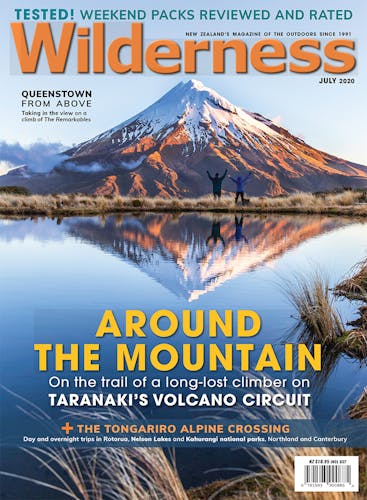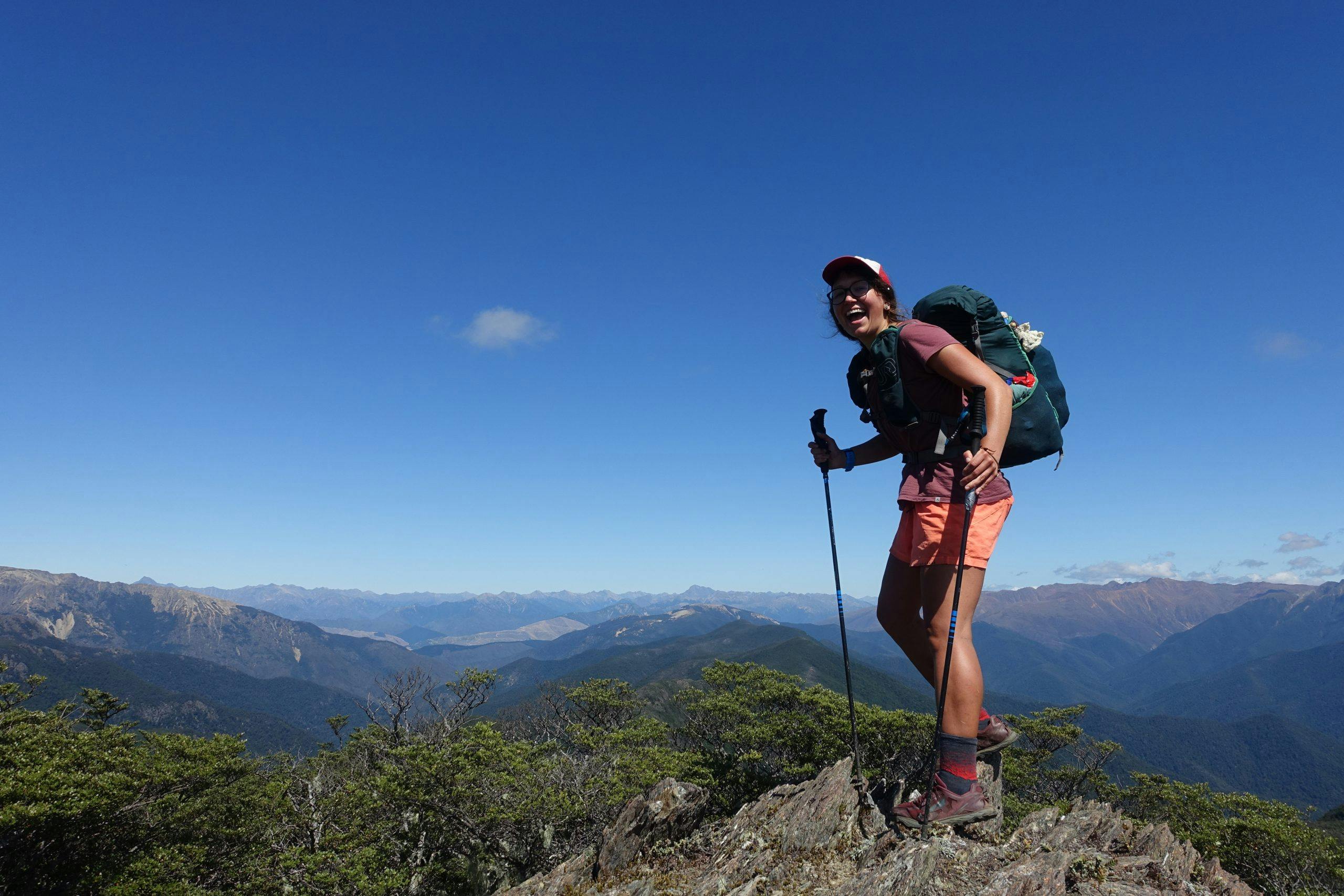During lockdown, I interviewed Ieva Laucina, a young Latvian who had walked the South Island with a ridiculously light pack with a base weight (without food and water) of 6.3kg.
Not to be outdone, this month I caught up with Roger Parsons – another South Island Te Araroa Trail walker – who sits at the other end of the age spectrum. Now 75, Parsons walked the South Island section when he was 71. He’s got dreams of one day walking the North Island section from Cape Reinga to Auckland.
Like Laucina, Parsons packs light. His goal is to tramp with less than 10kg, including food and water – any more and he reckons his pack wouldn’t be able to cope. And nor, he says, could his body. He wants to keep tramping and doing the kind of multi-day trips he’s done all his life and he can’t do that with a heavy pack.
Traditionally in New Zealand, trampers have been content with their heavy-weight storm gear, tents and packs. The argument goes that unlike in continental Europe or in North America, New Zealand’s weather is much wetter and more fickle – it’s liable to change at a moment’s notice. And our trails are much rougher, with dense bush that can scratch, scrape and poke gear. This is all true and it adds up to what is colloquially known as ‘New Zealand conditions’. The reasoning goes, if you want your gear to survive – if you want to survive – then you need the toughest (i.e. heaviest) gear available.
So New Zealanders, despite living in an outdoor paradise, have been much slower to adapt to lightweight tramping like Europeans and North Americans. ‘New Zealand conditions’ is a phrase still bandied about in warning to those perceived to be packing too light. It’s mostly used to criticise foreigners who ‘obviously don’t know what they’re getting themselves into’.
But I think it’s about time to retire the phrase when used to assess the contents of someone else’s pack. These days, gear is so much better than it once was. It’s not only lighter but in some cases it can also be stronger, warmer and more weatherproof. Weather forecasting is also better, so we can be pretty sure of the conditions we’re going to get – though of course you can never become complacent.
And there’s also the crucial element of experience. The more time you spend outdoors using your kit, the better you are at evaluating its performance and the conditions it can be used in.
Buy the gear that makes you happy and that helps you enjoy your time outdoors – if that’s a 20kg or 10kg pack, that’s fine. Use your gear in the conditions, and in the way it was designed for and you can’t go far wrong. Roger Parsons and Ieva Laucina have proved that.
August issue update: We’re nearly back to our regular publishing schedule, but still need at least two issues to get there. That means the August issue will be published on July 27.








